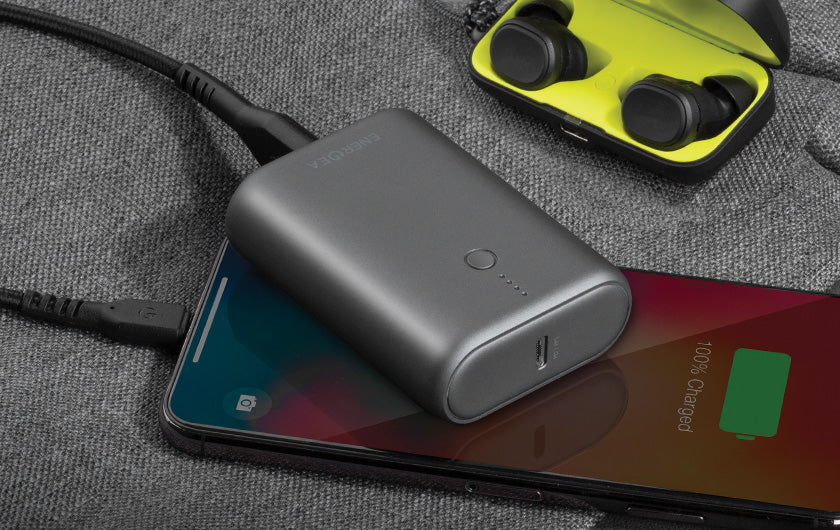Today, we simply cannot live without our devices, especially our smartphones. Communications, entertainment, and finding our way around a new place – everything is packed into one handy tool. However, all these features come with a cost, as our phone batteries seem to drain faster than ever. And there is no worse feeling than running out of power when you are out and about.
Fortunately, you can easily avoid the dreaded dead battery by carrying a portable charger with you. But before purchasing a power bank, you must first understand the factors to consider to ensure you choose a charger that meets your needs. So if you have decided to get a power bank to stay connected on the go, let us share how to select the best power bank for your devices.
Understanding charging jargons

There are several jargons you must be familiar with before you shop around for a power bank that suits your devices:
- Capacity – The capacity of the power bank will determine how much power the device holds. This is usually measured in milliamp hours (mAh).
- Port – The port refers to the type of socket or connector. Most power banks available on the market must be recharged with a USB-C port. But they can transfer power to other devices via a USB-A (the traditional USB plug) or USB-C cable.
- Input – The amount of power required to charge the power bank.
- Output – The amount of power the charger can supply to other devices.
How to choose your ideal power bank

Factor #1: The ideal capacity for your needs
A higher capacity (mAh) power bank means more energy inside to charge your devices multiple times. So you should just get a charger with the largest capacity, right? Unfortunately, it is not that simple, especially if you plan on utilising the power bank for your holidays or business trips.
Power banks that carry more power weigh more and are bulkier, making them unsuitable for travel. Furthermore, you should know that there are restrictions for carrying your power banks on an aeroplane. You can take two power banks with you, provided they have a total capacity of up to 27,000mAh (100Wh). And they must be stored in your carry-on luggage.
Another thing to note is that transferring power from one battery to another requires energy. Most power banks will expand around 30% of the total capacity to deliver the charge to your devices. Although, higher-quality power banks tend to lose less. So if you have a 10,000mAh power bank, only around 7,000mAh is usable. If you use an iPhone 14 Pro, with a battery capacity of 3,200mAh, you can only charge your phone twice.
Factor #2: The number of ports in the power bank
Nowadays, it is common to see a person juggle between multiple devices – from their smartwatch to their tablet and phone. When these gadgets are drained one after the other, the user will likely face a conundrum in deciding which device to charge first. Thankfully, this will no longer be an issue if you have a power bank with multiple charging ports.
A power bank with multiple charging ports, including Type C (PD) and QC 3.0 USB ports, will allow you to charge several devices simultaneously. Plus, it makes more sense to bring a power bank with 20,000mAh and multiple charging ports compared to carrying several power banks with a battery capacity of 5,000mAh or less for travelling, as it is time and space-saving simultaneously.
Factor #3: The input and output of the power bank
There are several factors that decide how much power is transferred between a power bank and a phone. For example, if your smartphone has an input of 5 volts and 2 amps (5V/2A), you will require a power bank with an identical output to charge the device at its fastest possible speed.
However, if the power bank has a lower output, your device will charge slower. Fortunately, there is no issue with the reverse. If the power bank has a higher output, your device will still charge at full speed with no additional risk. So if you want the fastest possible charging speed, look for a power bank with an output equal to or higher than your phone’s input.
With that said, many smartphones now have their own proprietary fast-charging hardware. As a result, your phone may not always charge at maximum speed, even if the input and output of both devices match. So if you want a fast charging power bank that powers your device at the maximum possible speed, do ensure the power bank is suitable for your gadgets. Always check with your retailer if your devices are compatible before making a purchase.
Now that you have a better idea of how to find the best power bank for your needs, you are undoubtedly ready to begin your search. Fortunately, whether you are looking for a lightweight portable charger or a power bank that can charge all your devices on the go, we have you covered. At Energea, we have a comprehensive catalogue of portable chargers! Do not hesitate to contact us today if you have queries about selecting a suitable power bank compatible with your devices.


